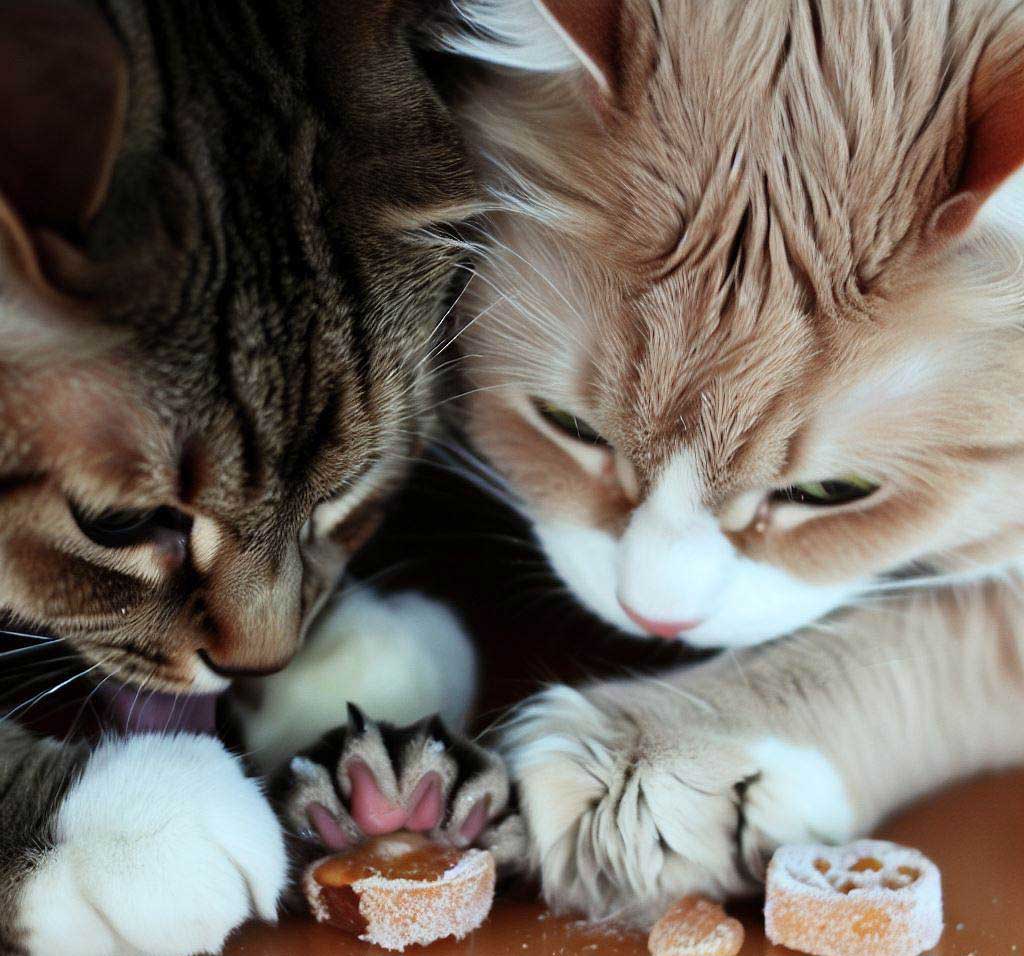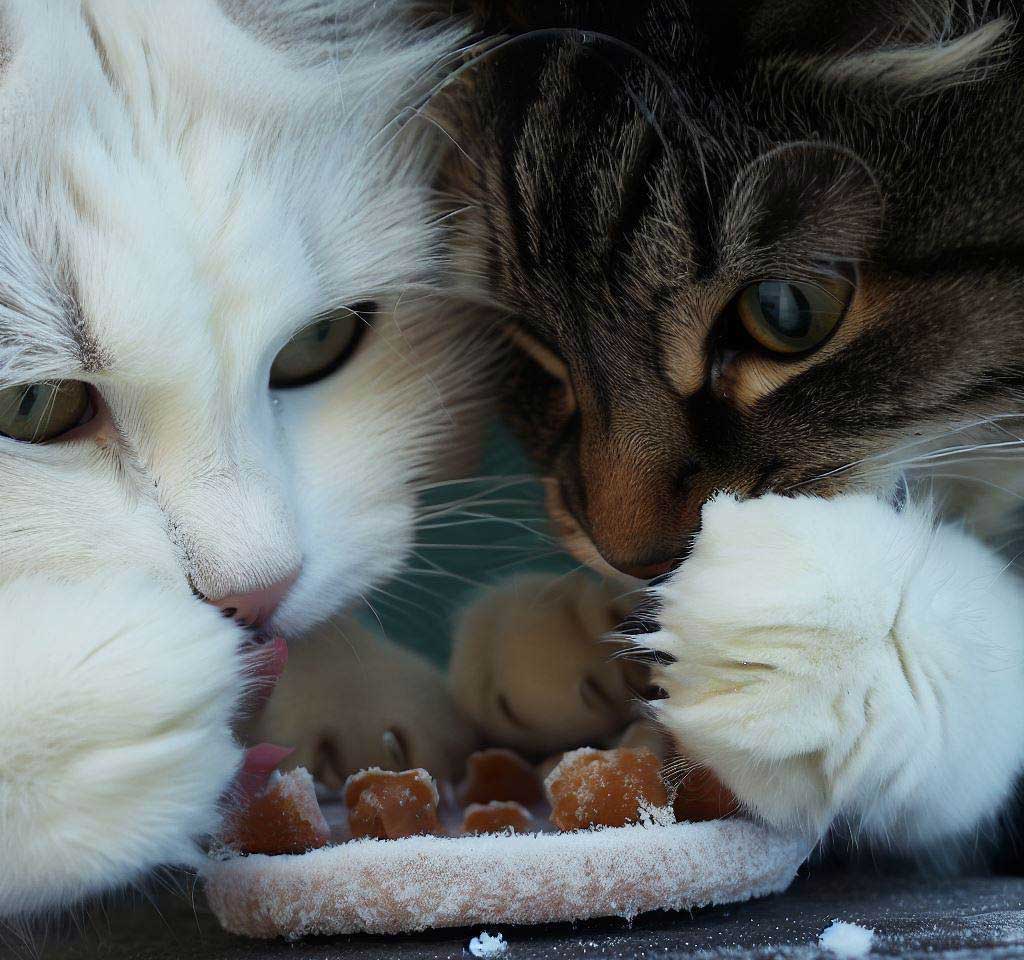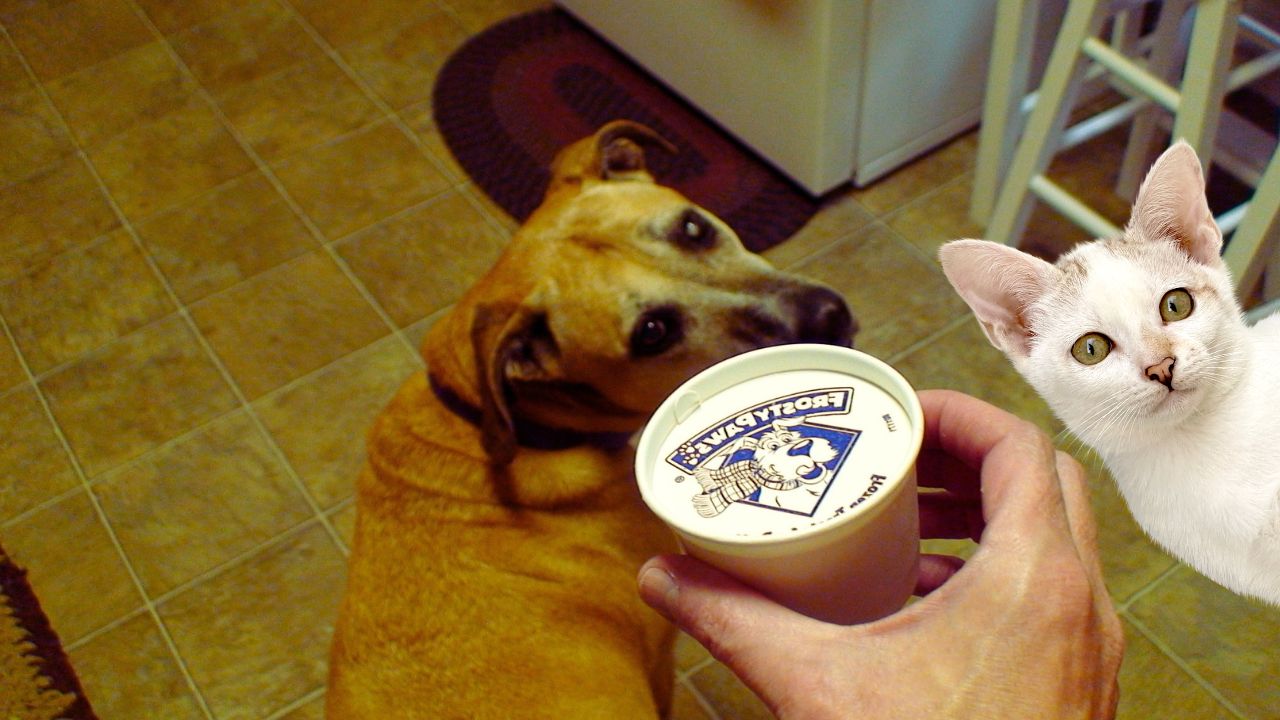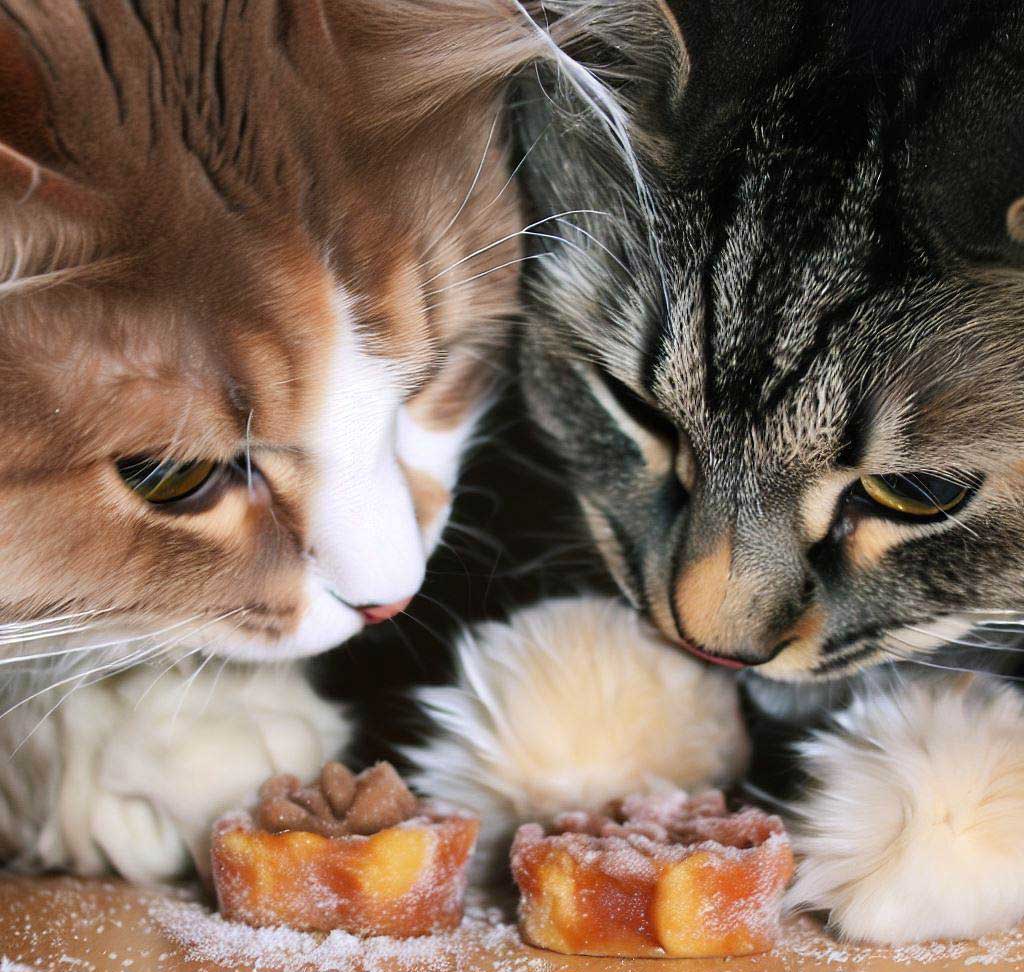
Can cats eat frosty paws? Cats may love Frosty Paws, but as much as we’d like to believe they are safe and good to eat, this isn’t true. Cats can get very sick if they consume them and should never eat them. In this article, we’ll explain why cats shouldn’t eat Frosty Paws and the risks they face. We will also discuss what you can do to protect your cat from them in the future.
What are frosty paws?
Frosty Paws are a type of ice cream made specifically for dogs. However, some wonder if their feline friends can enjoy this frozen treat. While most cats would probably turn their noses up at a bowl of frosty paws, there are a few exceptions.
Generally speaking, cats are lactose intolerant: Cats are typically lactose intolerant, meaning they cannot digest milk products. This is because they lack the enzyme needed to break down lactose. However, some cats may tolerate small amounts of dairy without any problems.

Nutritional Value
While we might think of frosty paws as a summertime treat, our cats can enjoy them year-round! They can be a great source of hydration for our feline friends. And, since they’re made with real fruit and yogurt, they offer some nutritional value. However, it’s important to remember that cats are obligate carnivores, so they require a diet high in protein and low in carbohydrates. With that said, let’s take a closer look at the nutritional value of frosty paws.
Ingredients & Allergens
The ingredients in Frosty Paws are generally considered safe for cats. However, some ingredients may risk cats with certain allergies or sensitivities. The main allergens in Frosty Paws are milk and soy. If your cat is allergic to either of these ingredients, it should not eat Frosty Paws. Additionally, the sugar content in Frosty Paws may be too high for some cats. If your cat has diabetes or is obese, it’s best to avoid giving them this treat.
should not eat Frosty Paws. Additionally, the sugar content in Frosty Paws may be too high for some cats. If your cat has diabetes or is obese, it’s best to avoid giving them this treat.
Side Effects & Risks
Unfortunately, not all side effects are minor. In some cases, cats have developed frostbite after eating Frosty Paws. In other cases, they’ve become severely ill and even died. While it’s impossible to know whether your cat will be affected, it’s important to be aware of the risks before giving them this treat.
How Often Should You Feed Them To Your Cat?
If you’ve ever wondered, Can cats eat frosty paws? The answer is a resounding yes! Most cats love the taste of frosty paws. However, it would help if you only fed them to your cat in moderation. Too much of a good thing can harm your cat’s health. So, how often should you feed your cat frosty paws? The answer depends on your cat’s age, health, and activity level. For example, a kitten needs more frequent meals than an adult cat. And an indoor cat needs fewer calories than an outdoor cat. Talk to your veterinarian about how often to feed your frosty cat paws and other treats.
Why do cats like frosty paws so much?
While the ingredients in frosty paws are generally safe for cats, the high sugar content can lead to weight gain and other health problems. So, if you’re wondering whether or not you should give your cat a frosty paw, the answer is it depends. If your cat is overweight or has diabetes, it’s best to avoid giving them this treat. However, if your cat is healthy and enjoys the occasional frosty paw, indulging them is no harm.

Are there health risks associated with eating frosty paws?
While no health risks are associated with eating frosty paws, there are some potential dangers. If your cat ingests too much of the frosting, it could get an upset stomach or experience diarrhea. In extreme cases, ingesting large amounts of frosting could lead to pancreatitis. Contact your veterinarian immediately if you’re concerned that your cat may have eaten too much frosting.
Are they ok to give as a treat occasionally?
It’s hard to resist those pleading kitty eyes when you’re eating a frosty paw, but before you share, it’s important to know if cats can eat them. The good news is that frosty paws are generally safe for cats. However, there are a few things to keep in mind. First, the chocolate in frosty paws can be toxic to cats, so it’s important to ensure your cat doesn’t eat too much. Secondly, the sugar in frosty paws can cause tummy trouble for some cats. If your cat has never had frosty paws before, it’s best to give them a small amount at first to see how they react.

Are they safe for your cat?
While the answer may surprise you, the fact is that cats can eat frosty paws. However, it would help if you kept a few things in mind before feeding them to your feline friend.
First and foremost, it’s important to check the ingredients list to make sure there are no harmful chemicals or artificial flavors that could potentially harm your cat. Secondly, frosty paws generally contain a lot of sugar, so limiting their intake is best. Lastly, ensure your cat has access to plenty of fresh water to avoid dehydration.
Is it safe for my cat to eat other ice cream treats too?
It’s a question every cat owner has at some point: can cats eat frosty paws? The answer may surprise you. While it’s generally safe for cats to eat frosty paws, there are a few things you should keep in mind. First, ensure the frosty paw does not contain any xylitol, as this can be toxic to cats. Second, remember that sugar is not great for cats, so give them only a small amount as a treat. Lastly, keep an eye on your cat after they eat a frosty paw, as some may experience an upset stomach or diarrhea. If you have any concerns, consult with your veterinarian.
What if I Think They Have Eaten Too Many?
If you think your cat has eaten too many Frosty Paws, the best thing to do is call your veterinarian. They can give you specific advice for your cat’s situation. Generally, if a cat eats too much of anything, it can cause vomiting and diarrhea. So, if your cat is experiencing either of those symptoms, it’s best to call the vet immediately.

